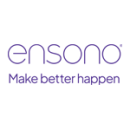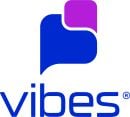Hyperautomation. Data fabric. The metaverse. Two of these are trends Chicago tech leaders are actively keeping an eye on in 2022 and the other is, well, let’s just say an idea thats time might not have come just yet.
The metaverse was not snubbed because Chicago’s tech companies prefer to play it safe when it comes to new technology. Rather, it’s that on the whole, the city’s tech scene is characterized by companies that combine sound business practices with innovative technology. This means, naturally, that the tech trends local leaders are watching tend to be those that can make an actual, tangible impact on a company’s bottom line or the way its teams work as opposed to ideas whose business cases have yet to be fully fleshed out.
Of course, hyperautomation and data fabric are far from the only trends that have piqued the interest of local CTOs, VPs of tech and directors of engineering. From the impact of low-code and no-code platforms on banks to contactless delivery and how it could potentially reshape the fulfillment industry, these are the tech trends local engineering leaders are keeping their eyes on in 2022.
The way companies work with big data is evolving, as evidenced by the tech trend Sheethal Sarah Chacko, senior manager of software engineering at Ensono, a provider of digital transformation services, is most interested in for 2022. Chacko said she will be keeping tabs on data fabric in the coming year, a relatively new concept in data platform architecture that aims to do more faster than ever before with the data they’ve collected.
What’s one tech trend you’ll be watching closely in 2022?
Data trends and its impact on decision-making is something that I am very interested in. Although analytics feels like it is everywhere, clean and accessible data still is elusive. Solving for the challenges of different data formats and naming and identifying lost and duplicate data is an ongoing slog. Seamless, centralized metadata-driven data is a continuous aspiration.
Gartner defines “data fabric” as a design concept that serves as an integrated layer, or fabric, of data and connecting processes. Data fabric leverages both human and machine capabilities to access data in place or support its consolidation where appropriate. It enables organizations to identify and connect data from different sources to discover business-relevant relationships between the available data points.
Having data in a format that can be consumed by different stakeholders will allow us to understand what data we need, what data we can use to drive decisions and which of those decisions are done best by humans versus the ones most suited to be handled by machines. A robust data architecture can then be the backbone of critical and efficient decision-making.
Data fabric leverages both human and machine capabilities to access data in place.”
How do you plan to apply this technology to your work in 2022 (or beyond)?
My team is thinking about how to be better data champions. We are investing in building a data platform that will provide flexible and resilient integration of data across different infrastructure hosting solutions and business users. The goal is to create a scalable architecture that allows us to overcome technical roadblocks caused by rising integration challenges. To do this, we plan to leverage the agility frameworks that we excel in.
With this integrated layer, we will be able to provide valuable insights, identify patterns and trends, and provide more context to the data we already have to simplify decision-making for our clients. Ensono’s investments in initiatives such as these help keep us relevant and focused on solving challenging problems.
The pandemic makes the simple act of delivering anything a health risk for both the delivery person and recipient. Given this issue, Ovi Tisler, director of engineering at Grubhub, said he’s keeping a close eye on the continued evolution of contactless delivery, both in the food delivery space and in the fulfillment industry more generally.
What’s one tech trend you’ll be watching closely in 2022?
One trend I am closely watching is the increased focus on food safety through streamlining pickup and drop-offs for delivery drivers. The Covid-19 pandemic was a great reminder of the importance of food safety, and contactless technology is becoming a mainstream way to safely hand-off food while also improving the user experience.
I see this trend continuing and growing to more touch points in the fulfillment space.”
What impact do you think this trend will have on your industry in particular?
A continued focus on food safety doesn’t stop at the restaurant. Most orders placed on Grubhub are for delivery. And while the courier is entrusted with the safety of the food, we also have a responsibility to keep our drivers safe in the midst of the pandemic and beyond. Defaulting to contactless delivery gives diners and drivers an added layer of protection by removing unnecessary contact between the two. I see this trend continuing and growing to more touch points in the fulfillment space.
Digital keyless entrances into large apartment buildings for couriers and delivery lockers will further limit contact between couriers and diners or the doormen who need to allow a driver access to make deliveries. Similar technology can be implemented at the restaurant for the pickup leg of a delivery. Better integration between restaurant tech and courier apps will aid in making that handoff process seamless and safe.
Fred Lee knows all too well how hard it can be for banks and other financial institutions to digitize processes and release new digital products and features. Lee is the CTO of Amount, whose platform is designed to help banks accelerate their digital transformations and improve the customer experience. For 2022, Amount’s CTO said he is especially interested in the evolution of low-code and no-code software development platforms as they play a major role in his company’s future plans.
What’s one tech trend you’ll be watching closely in 2022?
I am interested in the rise and adoption of more no code or low-code platforms. Over the years, software has been on a consistent trajectory of abstracting away the difficult parts of computer science. Programming languages have become more and more high-level. Even infrastructure has been put behind an AWS dashboard. Soon, instead of a developer in front of an IDE or Vim, we will have a product manager in front of a GUI dragging and dropping interfaces and push-button deploying real dynamic web applications.
Soon, instead of a developer in front of an IDE or Vim, we will have a product manager in front of a GUI.”
How do you plan to apply this technology to your work in 2022 (or beyond)?
In many ways, Amount is working on doing this exact same thing for banks and other financial institutions. Amount is building a platform and product that allows banks and financial institutions to build, design and deploy financial products, capabilities and transactions much faster than it would normally take. Traditionally, it is normal for a bank to take years to release products. Amount can do that much faster. This is because we are building that low-code platform. We aren’t there yet, but that is the path we are on. The market demand has given us confidence that we are building the correct platform for the future.
Silverwork Solutions CEO Michael Kaysen is in the business of automation. His company creates digital workers that help mortgage companies augment their human workforce and automate repetitive manual tasks. Kaysen said one of the evolutions of automation, “hyperautomation,” or the concept of intelligent automation at scale where bots proactively seek out processes to automate, will be worth watching closely next year.
What’s one tech trend you’ll be watching closely in 2022?
The broader trend of hyperautomation has been important and we think it will be even more relevant in 2022. Hyperautomation depends upon advances in supporting technologies such as optical character recognition, intelligent character recognition, machine learning and natural language processing. As these enabling technologies become more powerful, the art of the possible with hyper automation becomes very impressive. We see hyper automation as not really a single topic but as an overarching theme that includes several tech trends in the area of cognitive technology and process automation.
We see hyperautomation as not really a single topic but as an overarching theme.”
How do you plan to apply this technology to your work in 2022 (or beyond)?
As a company, we are reinventing lending using role-based automation based on our proprietary robotic platform. We are currently taking advantage of hyperautomation to automate everything that can be automated in our clients’ organizations. The organizing principle for developing our automation is building role-based software robots that have human-like personas.
Automating what people do at work is challenging and requires us to build and integrate state-of-the-market technologies in the areas of document recognition, decisioning and workflow. The gains we’ve helped our clients realize to date from applying intelligent automation, and now hyperautomation, in this fashion have been strong, and we think this trend is still in the early stages of realizing its potential.
Steve Gall has a message for financial companies that are still dragging their feet when it comes to cloud-native technologies: 2022 is the year to get moving. While Gall, the VP of engineering at personal finance and investing app M1 Finance, has words of warning for holdouts, he told Built In that he’s encouraged by the direction some of the financial industry’s biggest players are moving in.
What’s one tech trend you’ll be watching closely in 2022?
I am very excited about the adoption of cloud-native architectures. We’ve come a very long way from understanding cloud computing as just simply relocating workloads from on-premise to the cloud. Modern cloud-native techniques and technologies like container orchestration, service meshes and CI/CD enable teams to easily build and deploy highly resilient and scalable applications to production. More generally, cloud-native removes a lot of traditional barriers to getting ideas implemented and provides a quicker path toward realizing business value.
Firms not assessing and adopting cloud-native solutions risk becoming irrelevant within the next decade.”
What impact do you think this trend will have on your industry in particular?
A reality that the financial industry faces is that many players still rely heavily on legacy technology like mainframes, on-premise servers and legacy API techniques. Firms not assessing and adopting cloud-native solutions risk becoming irrelevant within the next decade, and firms waiting too long to act will find themselves with an intimidatingly large backlog of challenges to solve, ranging from the need to evolve application development practices and techniques to having to establish or mature DevOps practices.
That said, I am very encouraged by the fact that industry leaders have signaled intent to commit to transitioning with hybrid approaches. For example, FINRA’s new Consolidated Audit Trail and Cboe Global Markets’ Cboe Global Cloud are now being powered by Amazon Web Services, while Temenos’ SaaS platform heavily utilizes Azure for infrastructure and service delivery. Cloud-native is gaining traction and I anticipate that it will only accelerate.
Clarke Retzer is VP of engineering at Vibes, a mobile marketing company whose customers include Allstate, Discover and Sephora. Currently, the company’s creative capabilities are limited by the lack of widespread 5G availability. Retzer said Vibes is leveraging its close relationship with the nation’s top mobile carriers to ensure that as 5G becomes more available, his company is ready to take advantage of it. Here’s what that will mean for consumers.
What’s one tech trend you’ll be watching closely in 2022?
I am excited about 5G mobile networking. Mobile networking has been around for decades, and I have personally owned pagers, car phones, bag phones and many other types of mobile devices. I’ve been a lover of mobile technology for as long as it has been around, which adds to my excitement for 5G.
While Vibes has created incredible mobile experiences over the past two decades by making full use of available technology, there is still a gap in the consumer experience when operating on a mobile network compared to a corporate or home network. 5G brings these experiences closer together and pushes the capabilities of mobile networks beyond some corporate and home networks. This significant leap will propel the mobile marketing industry dramatically forward by capitalizing on the need to provide even deeper mobile experiences and engagement across all channels and networks.
I see a future where interactions with mobile devices are so fluid that we don’t consider whether we are on a private or mobile network.”
How do you plan to apply this technology to your work in 2022 (or beyond)?
Building on top of our strong foundation continues to be our focus as a company and my strategy as a technology leader. And as a Tier 1 aggregator, Vibes is leveraging its close relationship with cellular carriers to stay out in front of the market. We will continue to enhance the consumer mobile experience by introducing new technologies and building on top of current ones. You can expect the experiences to become even richer and more engaging than they are today, with quicker delivery and low latency.
I see a future where interactions with mobile devices are so fluid that we don’t consider whether we are on a private or mobile network and instead focus only on the content and interaction. Our future will continue to be mobile-centric and Vibes will remain in the driver’s seat, pushing the boundaries and expanding the possibilities.
When companies went fully remote in 2020, many assumed the transition would be easiest for engineers. That assumption completely left out the fact that being able to code from anywhere isn’t the same as being part of a team that completely transitions from working in-office to at home inside of a week. Ryan Ferretti, VP of tech at CraftJack, a marketplace that connects homeowners to local contractors, and his team made this transition. Ferretti said he’ll be paying close attention to advancements in remote working technology in 2022 as he seeks to help his team find new ways to recreate in-office interactions virtually.
What’s one tech trend you’ll be watching closely in 2022?
I’m most excited the advancement of tools and products centered around remote collaboration. Our small, tight-knit tech team went fully remote last year, and while things like Zoom helped us get us through the beginning of remote life, it felt too clunky to act as a replacement for those ad hoc team brainstorming groups or pair programming sessions.
You can’t simply drop in the “in-person” way of working into a fully remote company. Finding the right tools that can foster remote collaboration is going to be very important for building happy and highly productive teams in the future.
Finding the right tools that can foster remote collaboration is going to be very important.”
How do you plan to apply this technology to your work in 2022 (or beyond)?
For engineering, we want to start incorporating tools like Visual Studio Live Share into our development process. These types of tools not only facilitate one-on-one pairing but also group collaboration. Whereas before an engineer would show their code on a projector and others crammed into the room could barely read it, now everyone can follow along with their full IDE at their disposal.
For all types of employees, we have played around with Gather, a tool that can mimic a virtual office or event space. It gives everyone the ability to move around and in and out of conversations much like how you would in real life. Finally, Slack just released its Huddle feature, which isn’t a new concept but does make getting everyone together so much easier than before. There is a ton of potential in this space, and I’ll withhold comments on the Metaverse, but remote collaboration plays right into that.





















